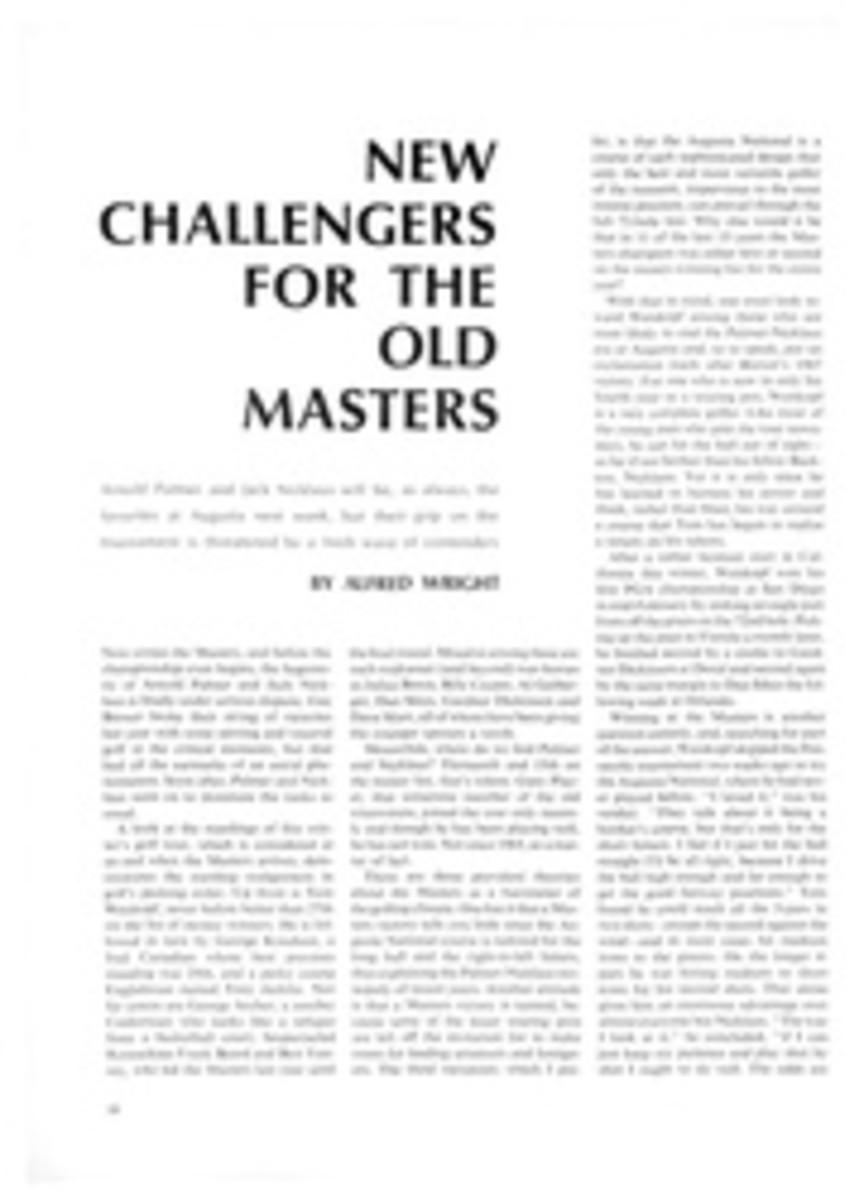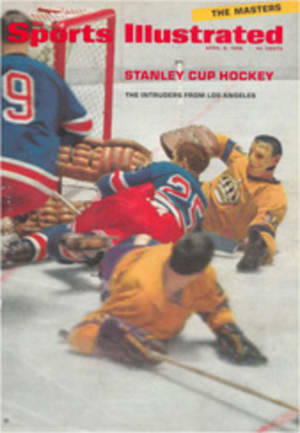
Globetrot on a big wheel
To the screeching hot rodder of today it may seem as though the bicycle is an invention nearly as old as the wheel itself. Actually, it is comparatively young. In the 1880s bicycles were an exciting novelty in the U.S. The "safety," with front and rear wheels the same size, was the newest thing, and its radical design made it possible for even the timid to mount and ride. But the real cyclist of that time remained loyal to the "ordinary," or "penny-farthing," a machine with a huge front wheel standing as high as a man's shoulder and a tiny wheel rolling along behind.
This bicycle, which predated the safety by about 10 years, was fiendishly difficult to master—a fact that helped account for the skilled rider's loyalty to it—and not readily adaptable to long-distance travel. Yet it was on such a machine that Thomas Stevens set out from San Francisco on an April morning in 1884 to cycle all around the world. Bidding goodby to his friends with a wave of the slouch hat he was soon to exchange for a more practical pith helmet (good for warding off thrown stones as well as sunshine), Stevens began the journey that was to carry him farther, presumably, than any bicyclist has ridden since—some 13,500 miles in all.
Pedaling across lands where no American, much less an American on a bicycle, had ever been, Stevens considered himself the special correspondent for a magazine called Outing. He was, more accurately, a rolling advertisement for his patron, Colonel Albert A. Pope, the pioneer bicycle manufacturer in America, whose Columbia had; more than any other, made bicycling a respectable pastime.
In Leslie's Illustrated Newspaper, the Columbia ordinary was advertised "for roads." But during much of Stevens' journey there were no roads of any sort, much less the smooth macadam that Pope was promoting as best for his bicycles. Crossing the mountains beyond Constantinople, Stevens had to push his cycle up an ancient pack-animal path where there had never been a wheeled vehicle of any sort and to edge along narrow ledges above precipices. Leaving Teheran, he slogged through mud, slush and deep snow accompanied by an equestrian holy man whose horse kept falling and pitching the old man into the mire. Stevens never complained; he found the "cold, bracing air suitable for exertion." Sometimes his bicycle had to be hauled at the end of a rope across wilderness rivers, after which Stevens would leap onto his machine and ride it across the mud flats faster than the apprehensive nomads he met could race away on their terrified camels.
In Europe, India and Japan people were used to seeing bicycles, but in Asia Minor his approach was often the occasion for riots in the villages. Everyone wanted to see his bicycle, and everyone expected to see him ride it. Usually, however tired he was, he tried to oblige, but no matter how many turns he took around the local square, the crowds' curiosity could not be satisfied. At many an inn where he took refuge, doors were forced open, and gentlemen travelers who tried to shelter him in their own rooms were compelled by the hysteria of the crowds at their windows to think of some polite way of inviting him back outside.
Most of Stevens' meals consisted of pot luck with nomads (usually yogurt and black bread) or the hasty purchase of the makings of a cold meal in a village followed by an equally hasty retreat into a country hiding place while village horsemen—all would-be cyclists—galloped up and down the road searching for him.
In China the danger he met was much more serious. He arrived there during a particularly severe outburst of antiforeignism, and he spent one night clutching his bicycle in a bamboo grove while all around howling mobs searched for him. Hurled bricks and stones left dents in his helmet.
In some lands, on the other hand, his reception was more splendid than any ever dreamed of by the decorous cyclists pictured in the advertisements enjoying the paths in New England parks. Local potentates on every level were politely eager to know more about his marvelous machine and often asked to be given lessons on this new form of horse. Trotting along beside some tottering pasha, whose legs were too short to reach the pedals, Stevens often wished he had included a web "instruction belt" with his other travel gear. Even when he really didn't deserve hospitality, as when he shoved a pasha's son into a watery ditch for too persistently examining the cyclometer, he was feasted with pilaf and sent on his way with a guard of honor—perhaps to protect the local populace from his unpredictable temper!
In Teheran, Stevens was received by the Shah himself. His Majesty asked many intelligent questions about the bicycle and requested a complete demonstration, during which he laughingly attempted to goad Stevens into riding into a ditch in the apparent hope of seeing what might happen when a rider fell off his bike.
One American advertisement claimed that after a bike ride, "nothing is so refreshing as a good bath." Stevens was not always able to follow the suggestion of this ad. Usually, in Persia anyway, he was able to reach some sort of village, but often enough he had to sleep on a lonely plain sheltered by a tent of his own devising which used the big wheel of his bike as a tent pole.
Leaving Persia, he headed out across the Desert of Despair toward Afghanistan. The borders of that country were closed to all travelers from the outside world and its frontier guards had the reputation of being very fierce. But Stevens, who had ridden through Russia to get to China after having been denied permission, rode on, confident that the proof of courage he had shown by crossing the desert would bring him a friendly welcome. He was promptly arrested to await transportation under guard back to Persia, but his imprisonment was in many ways for Stevens the happiest period of this extraordinary journey. Led off under arrest, he was asked by his military escort to give a demonstration. "The soldiers were delighted at the novelty of their duty, and they swung briskly along as I pedaled a little faster. They smiled at the exertion necessary to keep up, and falling in with their spirit of amusement, I gradually increased my speed, and finally shot ahead of them entirely." A few minutes later, "with good-humored anxiety" an Afghan officer galloped alongside and "motioned for me to stop and let the soldiers catch up."
Stevens was kept in a villa with a walled garden watched over by a detail of "fierce" soldiers who every morning fastened roses to their guns and amused themselves with some caged pheasants. His captors fed him pomegranate jam, bowls of sherbet and skewers of lamb and presented him with new boots English soap and Huntley and Palmer biscuits. A beautiful horse was tied in the garden so that he could have the pleasure of looking at it.
In all this paradise there was only one damnable note. He was not to have the pleasure of riding his bike through Afghanistan. Escorted back to Persia, he was allowed to swoop ahead of his armed escort on the promise that he would stop now and then to bathe or rest while the horsemen caught up. But his daring dashes made his guards so nervous that finally they took his cycle apart and tied it on a packhorse. The horse lay down on the five-foot wheel, bending it and breaking many spokes—the only serious mishap to the bicycle during the entire trip. It didn't do Stevens any good in the middle of Afghanistan that, as advertised "the parts are interchangeable." But Afghani gunsmiths skillfully trimmed the wheel drilled new holes and stretched new spokes. Despite their care, a number of spokes were not properly replaced. Even so, the wheel was still strong enough to carry Stevens many more thousands of miles.
All in all, Stevens' trip took about three years during which time he pedaled 3,000 miles across the U. S. through Europe to Constantinople and across Asia Minor to the city of Herat. There he was forced to dismount and go by sea and the Suez Canal to India, but he mounted again to cross that subcontinent as well as parts of China before taking ship again for Japan and a further bike ride.
Stevens arrived home in San Francisco in January 1887 to find that the craze for cycling had swept the entire U.S. But alas for oldtimers like himself, all of the new cyclists wanted "safeties." Stevens' globe-girdling trip was thus not only the most glorious but quite possibly the last important appearance of the old-fashioned penny-farthing.

